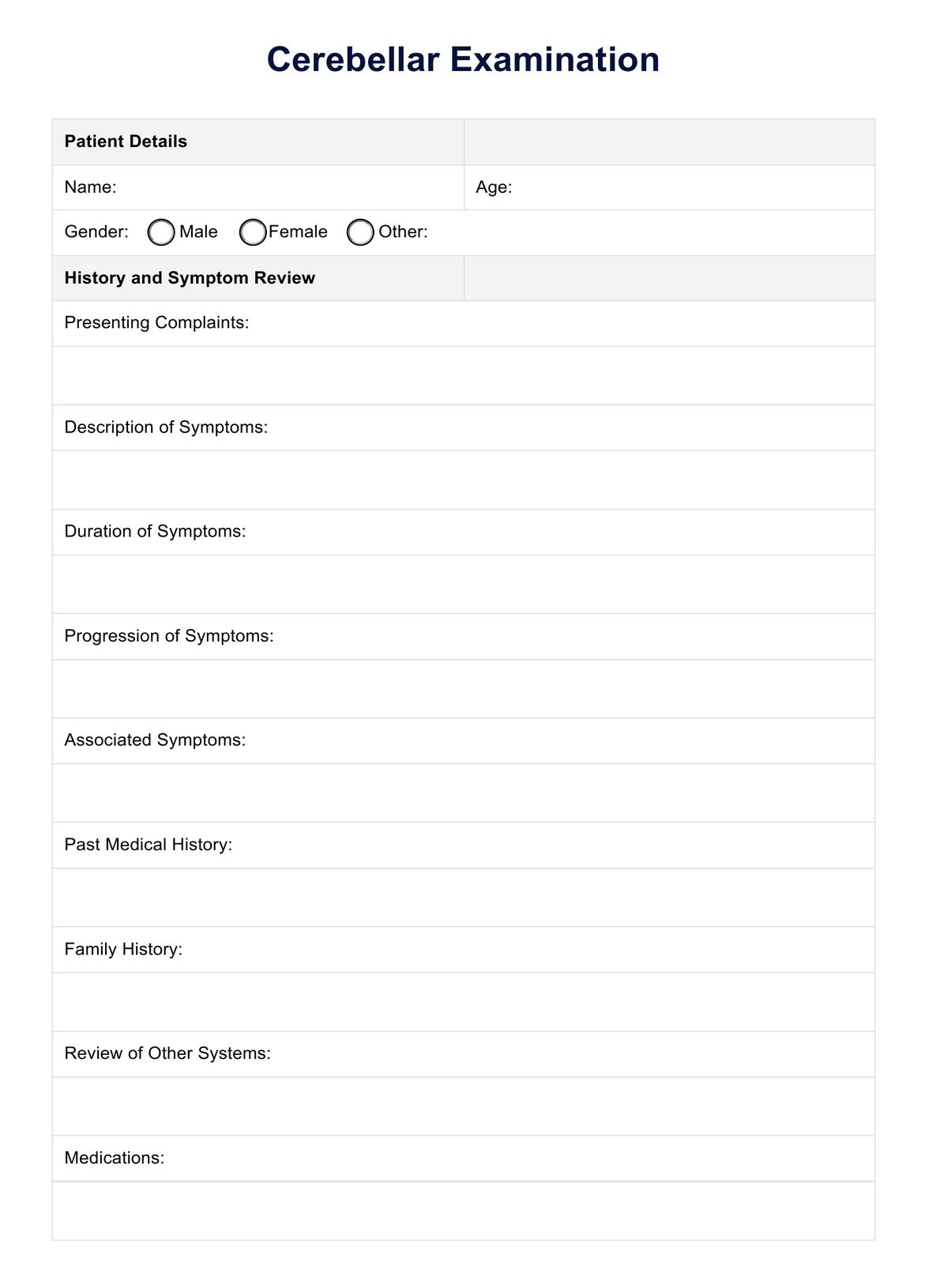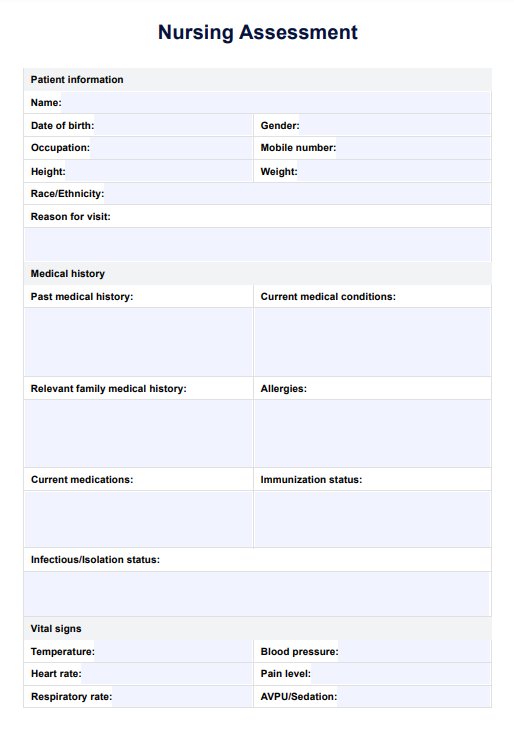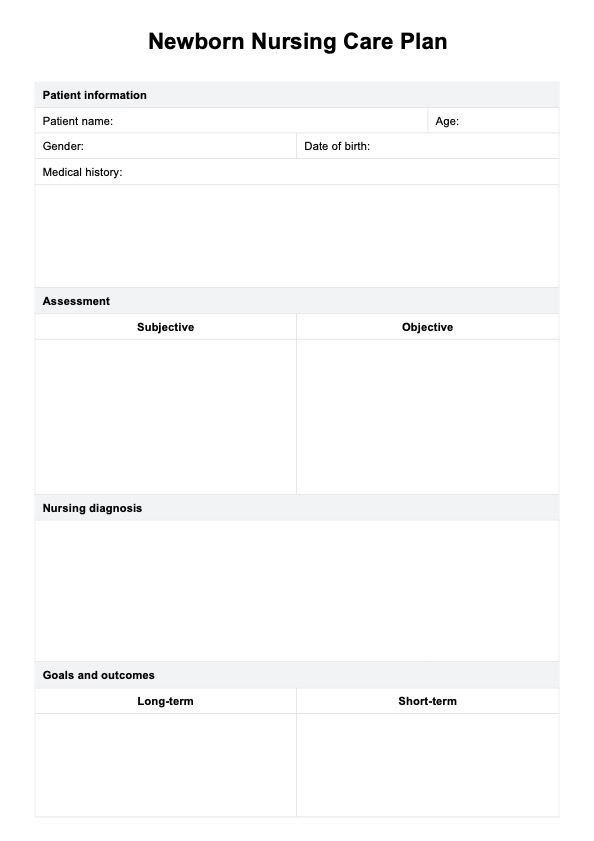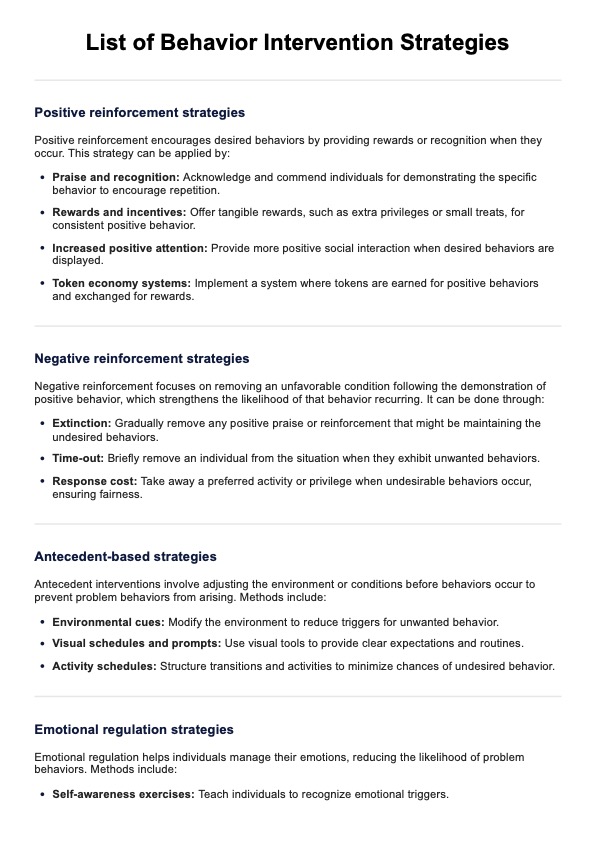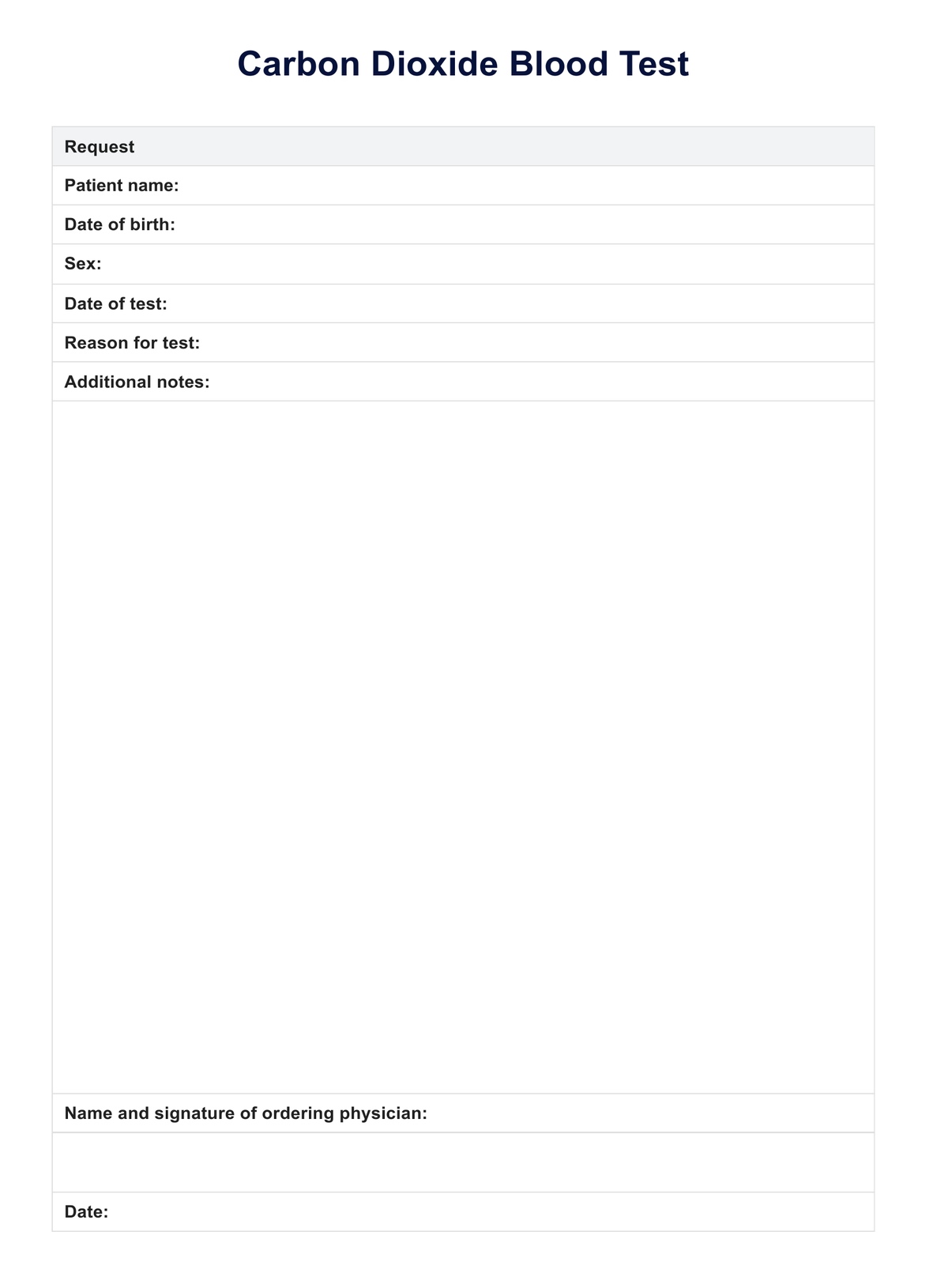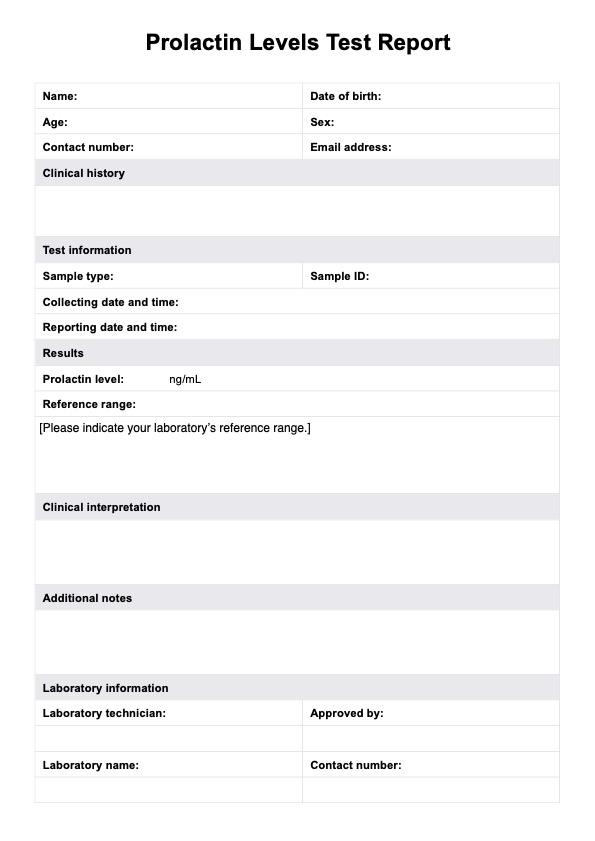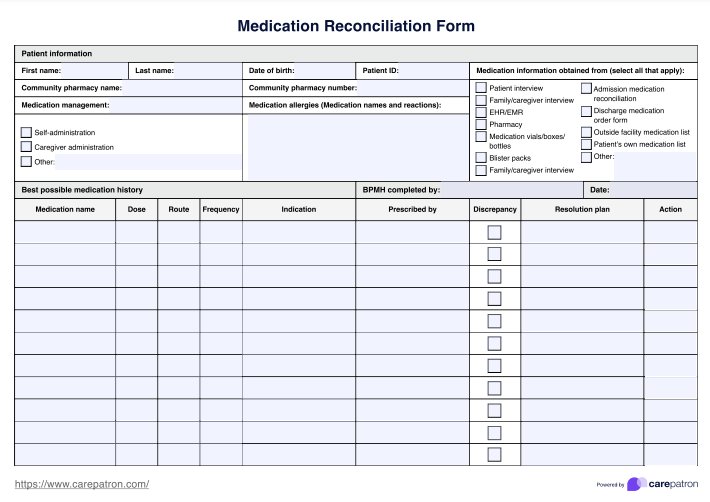Dysphagia
Explore the comprehensive Dysphagia Test and understand its significance with this free PDF download. Learn about dysphagia assessment today!
�?�


What is a Dysphagia Test?
Dysphagia, often described as the difficulty or discomfort associated with swallowing, can significantly impact an individual's quality of life. Fortunately, medical science offers various diagnostic tools to effectively evaluate and address this condition. One crucial component of this diagnostic process is the Dysphagia Test.
Understanding the Dysphagia Test
A is a multifaceted assessment designed to identify the underlying causes of difficulty swallowing, known as dysphagia. This comprehensive evaluation involves various clinical procedures tailored to each patient's unique symptoms and medical history.
This assessment may include a clinical examination by a healthcare professional, during which the patient's oral muscle strength, coordination, and sensation are examined. Additionally, more specialized tests like the Bedside Swallow Screen, Fiberoptic Endoscopic Evaluation of Swallow (FEES), Upper Endoscopy, and Videofluoroscopic Swallow Study (VFSS) may be performed, depending on the patient's needs.
The Significance of Dysphagia Tests
Dysphagia Tests are vital in identifying the root causes of swallowing difficulties. They provide valuable insights into whether the issue lies in the mouth, throat, or esophagus and whether it results from neurological conditions, structural abnormalities, or other medical factors.
Early detection and accurate diagnosis are critical because they enable healthcare providers to develop personalized treatment plans. These plans may include dietary modifications, exercise regimens, and medications to alleviate dysphagia symptoms and improve overall quality of life.
Dysphagia Tests are indispensable tools in diagnosing and addressing swallowing difficulties. They empower healthcare professionals to provide precise, tailored care to patients like never before, ultimately enhancing their well-being and quality of life.
If you or someone you know experiences difficulty swallowing, seeking a Dysphagia Test is a crucial step toward a healthier, more comfortable future!
Dysphagia Template
Dysphagia Example
How Does a Printable Dysphagia Test Work?
Using a Printable Dysphagia Test form is a straightforward process designed to help individuals and healthcare professionals systematically assess and document the presence and severity of swallowing difficulties (dysphagia). Below, we outline the steps involved:
Step 1: Access the Form
Begin by obtaining a Printable Dysphagia Test form. This can often be found online through trusted medical sources or provided by a healthcare provider.
Step 2: Review the Instructions
Before completing the form, carefully read any accompanying instructions or guidelines. Understanding how to fill out the form correctly is essential for accurate assessment.
Step 3: Patient Information
Start by filling in the patient's information. Include their name, date of birth, gender, and contact details. Ensuring accurate identification is crucial for medical records.
Step 4: Medical History
Document the patient's medical history, including any pre-existing conditions, allergies, current medications, and relevant family history. This background information helps assess the context of dysphagia.
Step 5: Test Procedure
Detail the specific dysphagia test procedures that were conducted. This may include clinical assessments, bedside swallow screens, fiberoptic endoscopic evaluations of swallow (FEES), upper endoscopy, and videofluoroscopic swallow studies (VFSS). Describe each procedure in clear terms.
Step 6: Findings
Summarize the findings from the dysphagia tests. Indicate whether the patient has been diagnosed with oral cavity, oropharyngeal, or esophageal dysphagia. These findings guide treatment decisions.
Step 7: Medications
If medications are prescribed as part of the treatment plan, list them here. Include the type, dosage, frequency, and any special instructions.
Step 8: Follow-Up
Provide information about recommended follow-up actions, such as referrals to specialists (speech and language pathologists, otolaryngologists, gastroenterologists, or neurologists), treatment plans, and monitoring schedules.
Following these clear and organized steps, a Printable Dysphagia Test form helps streamline the assessment and documentation of swallowing difficulties. This systematic approach ensures that healthcare providers can accurately diagnose dysphagia, plan appropriate treatments, and monitor progress effectively.
When to Use the Dysphagia Test
The Dysphagia Test serves as a valuable resource in the arsenal of healthcare professionals, including speech and language pathologists, otolaryngologists, gastroenterologists, and neurologists. Its application is essential in several clinical scenarios to effectively assess, diagnose, and manage dysphagia.
Diagnosis of Swallowing Disorders
The primary and most common use of the Dysphagia Test is in diagnosing patients who exhibit symptoms of swallowing difficulties. These symptoms may include coughing or gagging when swallowing, the sensation of food getting stuck in the throat, pain during swallowing, or an inability to swallow. By employing this assessment tool, healthcare practitioners can pinpoint the underlying causes of dysphagia, whether neurological, structural, or functional.
Treatment Planning
Once a dysphagia diagnosis is confirmed, the Dysphagia Test assists in developing tailored treatment plans. It helps healthcare providers determine the severity of the condition, guiding decisions on therapeutic interventions. Treatment options may include dietary modifications, exercises, and medications, all influenced by the test results.
Monitoring Progress
Dysphagia is often a chronic condition requiring ongoing care. The Dysphagia Test is instrumental in monitoring the progress of patients undergoing treatment. Regular re-assessment using the test enables practitioners to gauge the effectiveness of interventions and make necessary adjustments to optimize outcomes.
Referrals to Specialists
For patients with complex or severe dysphagia cases, the Dysphagia Test aids in determining the appropriate specialist referrals. This includes directing patients to speech and language pathologists for therapeutic interventions, otolaryngologists for structural evaluations, gastroenterologists for gastroesophageal reflux disease (GERD) assessment, or neurologists for neurological examinations.
Preoperative and Postoperative Assessments
In surgical cases involving the throat, esophagus, or related structures, the Dysphagia Test may be used as part of preoperative evaluations to establish a baseline. Postoperatively, it assists in assessing surgical outcomes and guiding rehabilitation efforts.
In summary, the Dysphagia Test is an indispensable tool in the clinical toolkit of healthcare professionals when managing patients with swallowing difficulties. Its utility spans diagnosis, treatment planning, progress monitoring, specialist referrals, and surgical assessments, ensuring comprehensive care for individuals affected by dysphagia.
What do the Results Mean?
When a patient undergoes a Dysphagia Test, the results provide crucial insights into the nature and severity of their swallowing difficulties. Understanding these results is fundamental for both healthcare providers and patients. Below, we describe common results and their implications:
Oral Cavity Dysphagia
If the Dysphagia Test reveals issues in the oral cavity, it typically indicates difficulties related to the mouth and oral structures. Common causes include muscle weakness following a stroke, nerve problems, or oral cavity structural abnormalities. Treatment may involve oral exercises, dietary modifications, or medications to address underlying causes.
Oropharyngeal Dysphagia
The problem is often located in the throat and pharynx when the test identifies oropharyngeal dysphagia. This can result from certain types of cancer, neurological diseases (e.g., multiple sclerosis or Parkinson's), or a pharyngoesophageal diverticulum. Management may involve therapeutic interventions or surgery, depending on the specific diagnosis.
Esophageal Dysphagia
Esophageal dysphagia points to issues in the esophagus. Common culprits include esophageal strictures (narrowing of the esophagus), tumors, or gastroesophageal reflux disease (GERD), where stomach contents leak into the esophagus. Treatment may include dilation procedures, medication for GERD, or surgical interventions.
It's important to note that Dysphagia Test results are highly individualized, and treatment plans should be tailored to the specific diagnosis and patient's needs. These results guide healthcare professionals in developing the most appropriate action, whether it involves therapeutic exercises, dietary changes, medication, or further specialized assessments.
Commonly asked questions
Dysphagia Tests are typically requested by healthcare professionals such as speech and language pathologists, otolaryngologists (ear, nose, and throat specialists), gastroenterologists, and neurologists. These specialists often initiate the test when patients present with symptoms of swallowing difficulties or related issues.
Dysphagia Tests are used to assess, diagnose, and manage swallowing difficulties, medically known as dysphagia. They help determine the underlying causes of dysphagia, ranging from neurological conditions to structural abnormalities or functional issues.
Once a diagnosis is established, Dysphagia Tests guide treatment planning, enabling healthcare providers to develop tailored interventions such as dietary modifications, therapeutic exercises, and medications. These tests also serve as a tool for monitoring patient progress and may lead to referrals for further specialized evaluations or procedures.
The duration of a Dysphagia Test can vary depending on the specific type of test being conducted and the patient's individual needs. Here are approximate timeframes for standard Dysphagia Tests:
- Bedside Swallow Screen: Typically takes 15-30 minutes.
- Fiberoptic Endoscopic Evaluation of Swallow (FEES): Usually lasts 30-45 minutes.
- Upper Endoscopy: Can range from 15 minutes to an hour or longer, including preparation and recovery time.
- Videofluoroscopic Swallow Study (VFSS): Generally takes 15-30 minutes but can vary.
- Clinical Assessment: Duration varies based on the extent of the examination and patient cooperation.
Patients should consult with their healthcare providers for a more precise estimate of the time required for their Dysphagia Test.


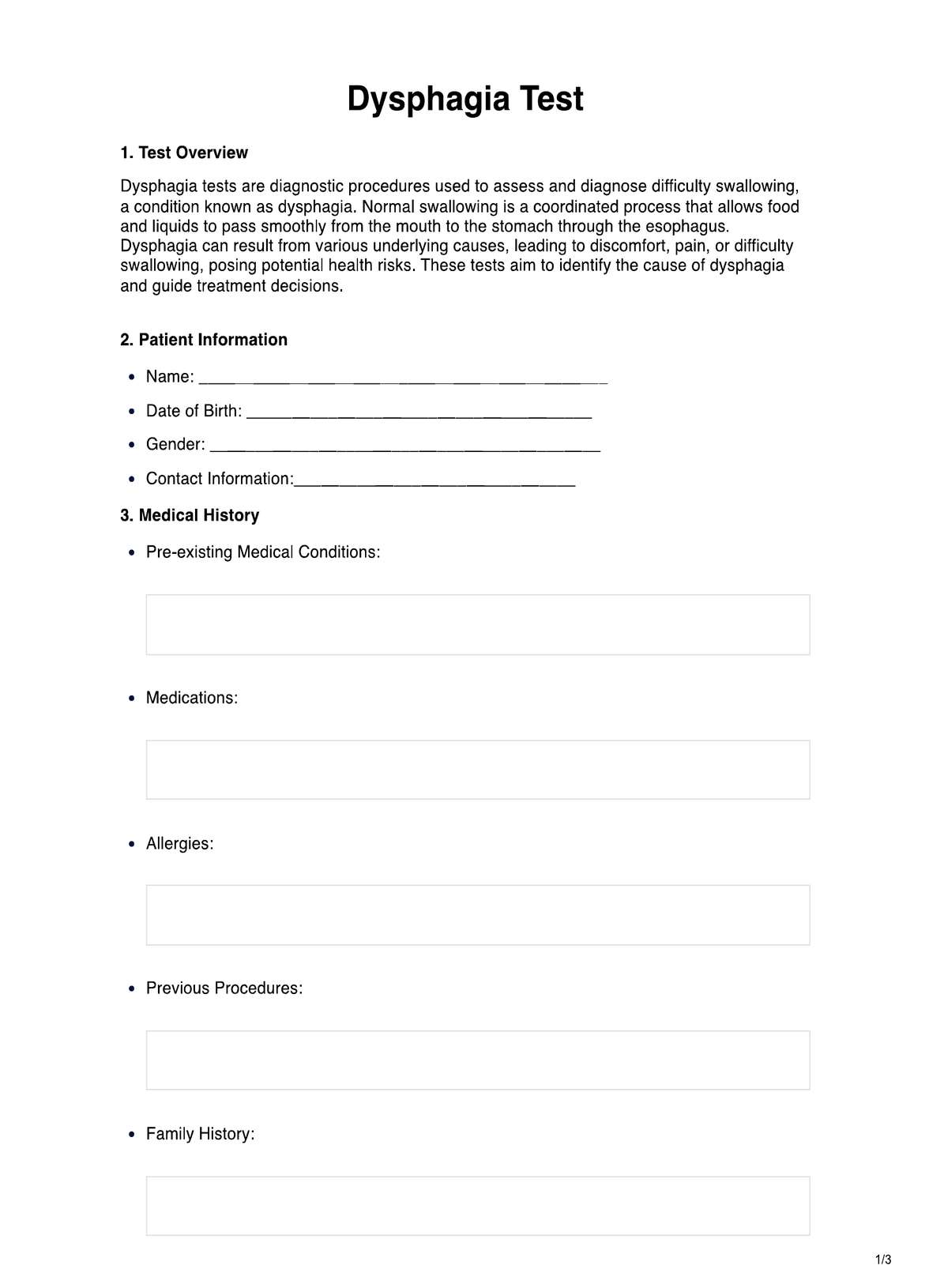
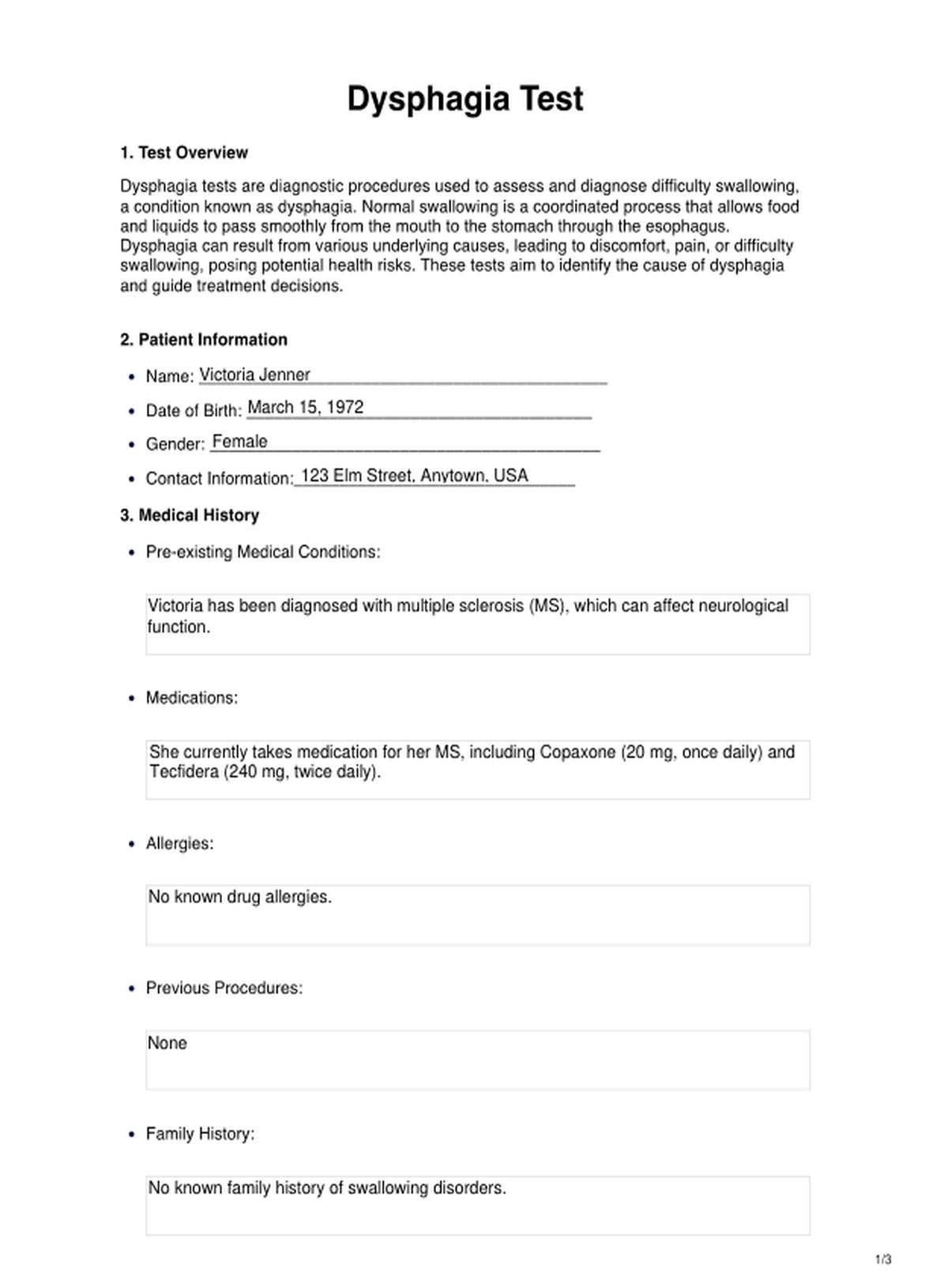

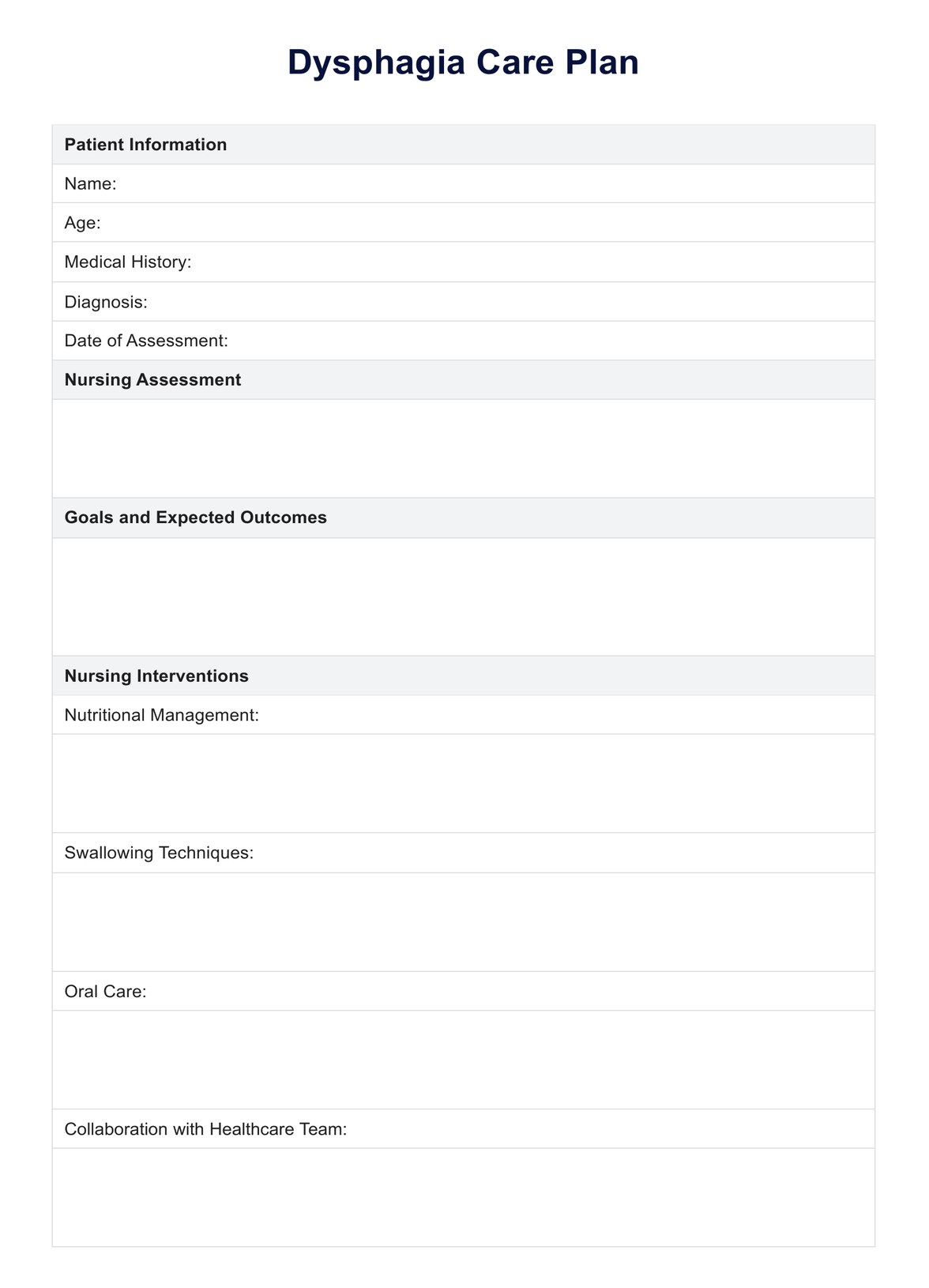


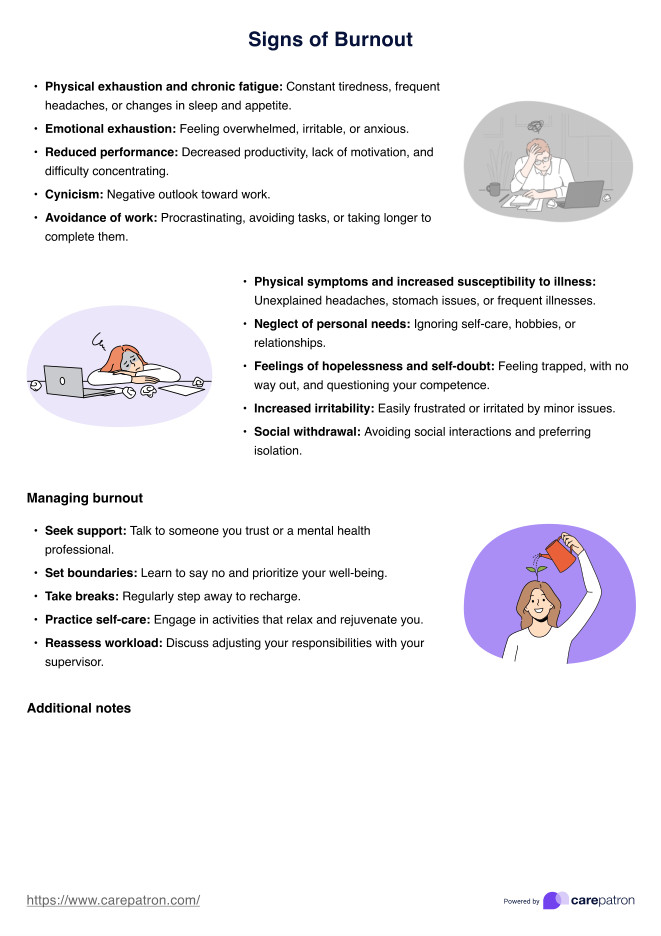












-template.jpg)



















































































